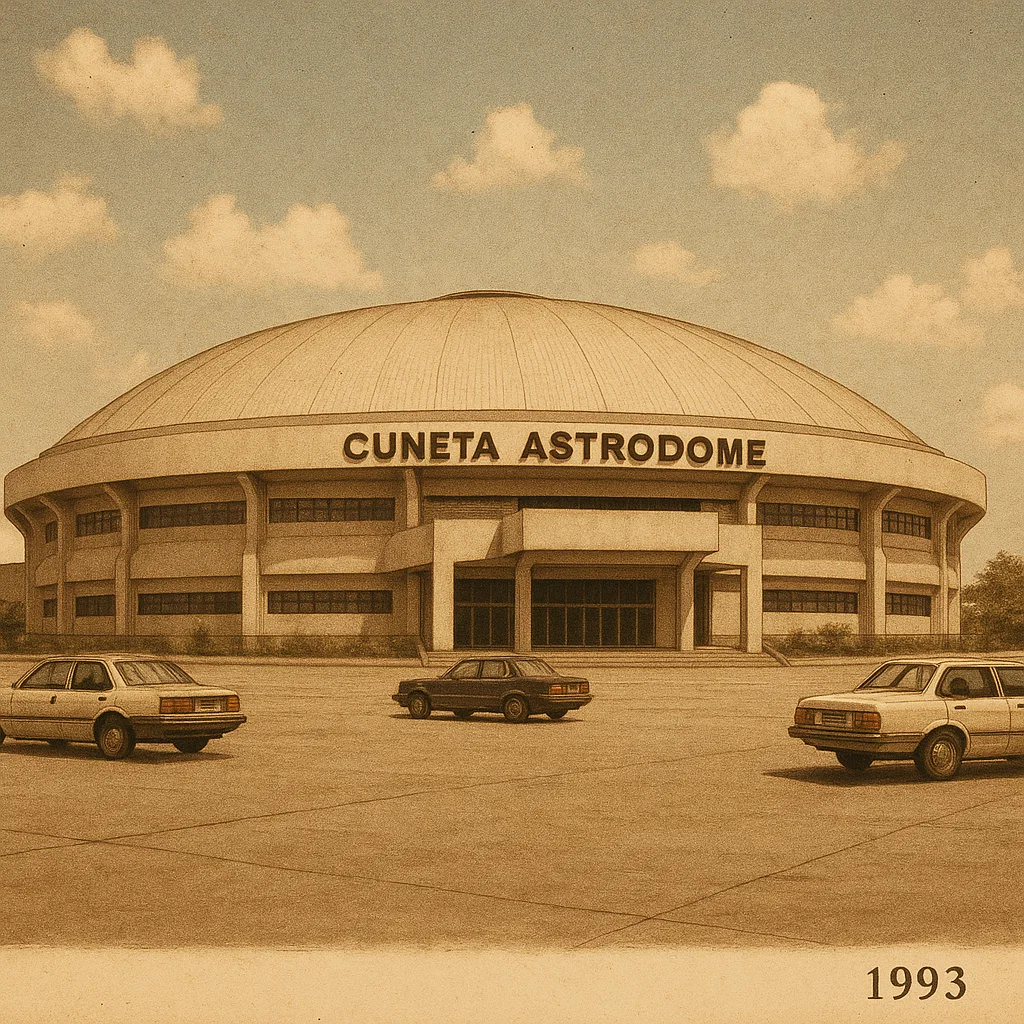The Cuneta Astrodome stands as a monumental symbol of Filipino passion for sports, entertainment, and civic gathering. Located in Pasay City, Metro Manila, it has hosted countless basketball matches, political events, church services, and concerts since it opened in the early 1990s. Over the years, the arena has become more than just a structure — it’s a cultural touchpoint for multiple generations of Filipinos. If you’re looking to explore the complete cuneta astrodome history, this detailed guide will walk you through the venue’s construction, key milestones, transformations, and legacy up to the present day.
In the pre-1990s era, Metro Manila had very few mid-sized indoor arenas that could accommodate events beyond 5,000–6,000 people. Venues like Araneta Coliseum catered to large events but were often too far for residents of southern Metro Manila. Recognizing this gap, Pasay City’s local government initiated a major infrastructure plan that included the construction of a multi-use arena — one that could serve the growing needs of its community.
Thus, the idea of the Cuneta Astrodome was born — a publicly funded indoor arena designed to serve the city’s political, entertainment, and sports needs. It was named after the influential Cuneta family, particularly former Mayor Pablo Cuneta, who was instrumental in the development of various public projects in the city. This arena would soon become one of his enduring legacies.
When Was Cuneta Astrodome Built?
Construction of the Cuneta Astrodome began in 1991 and was completed in early 1993. The venue was officially inaugurated on June 1993, with a local basketball event marking its opening night. Its construction was relatively fast-paced, taking less than two years from groundbreaking to full functionality — a rare feat for government-led infrastructure at the time.
The design of the Astrodome followed the typical dome structure popular in the 80s and 90s, with a large elliptical roof supported by steel trusses. Its oval shape allowed optimal views for sports like basketball and boxing, while also being suitable for musical and religious events. The estimated seating capacity upon opening was around 12,000, depending on the stage or court setup.
Its strategic location along Roxas Boulevard — a major coastal highway — gave it unparalleled accessibility. It was positioned near airports, hotels, and major roads, making it an attractive venue for promoters and event organizers alike. At the time of its launch, it was considered among the most modern public venues in Metro Manila, rivaling even private venues in acoustics and crowd management.
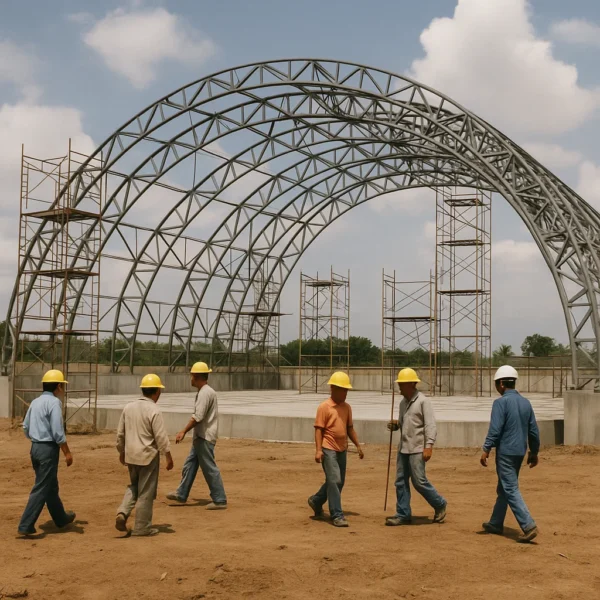
Over the next few years, the Astrodome became the regular home of the Philippine Basketball Association (PBA), further cementing its status as a premier basketball venue. It also hosted early concerts of local icons such as Sharon Cuneta (whose family the arena is named after), Gary Valenciano, and even foreign acts in its prime.
Aside from entertainment, the Cuneta Astrodome served various functions as a civic center. During national elections, it was used as a canvassing and tabulation site. During calamities, it transformed into an evacuation or relief distribution center, showcasing its flexibility as a community hub.
As of today, the Cuneta Astrodome may no longer be the newest or most high-tech arena in Metro Manila — but it remains an important cultural venue with a rich and enduring legacy. Its place in local history is deeply embedded in the memories of Filipinos who watched their favorite basketball heroes play here, or who saw their first live concert under its iconic dome.
Whether you’re a sports historian, an architecture enthusiast, or simply someone curious about arena history in the Philippines, the Cuneta Astrodome deserves your attention.
Major Milestones in Cuneta Astrodome’s History
Throughout its three-decade journey, the Cuneta Astrodome has witnessed numerous milestones that shaped both its identity and the role it plays in Filipino society. From epic sporting events to massive political rallies, it has been a dynamic and ever-relevant space. In this section, we’ll trace its most defining moments — year by year, event by event — to capture how the arena evolved over time.
1993–1999: The PBA Era Begins
Shortly after its inauguration, the Philippine Basketball Association (PBA) made the Cuneta Astrodome one of its main venues, alongside ULTRA and Araneta Coliseum. Fans flocked to Pasay to watch legendary players like Alvin Patrimonio, Johnny Abarrientos, and Vergel Meneses compete in unforgettable matches. During this period, the arena consistently drew sellout crowds and became the spiritual home of Philippine professional basketball.
By the late 1990s, the arena had firmly positioned itself as a go-to venue for domestic basketball. Even collegiate leagues like the UAAP and NCAA occasionally held games here, leveraging its central location and strong fanbase from southern Metro Manila.
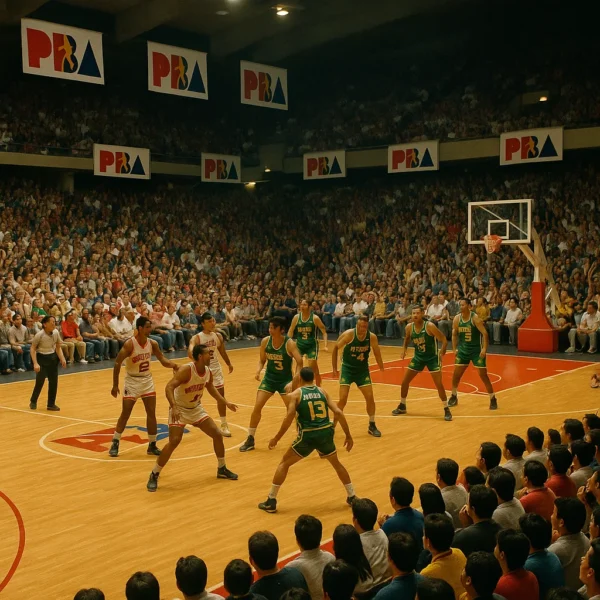
2000–2005: Diversification into Entertainment
As the new millennium approached, the Cuneta Astrodome underwent minor upgrades in lighting and acoustics to cater to a broader range of events. Concert organizers began using the arena more frequently due to its relatively low rental cost and its flexibility for both seated and standing crowds.
Notable artists such as Gary Valenciano and Sarah Geronimo held sold-out concerts here, making it a staple of the Philippine music scene. Local variety shows also filmed here, boosting its profile as a multimedia venue.
Politicians also took advantage of its crowd capacity and location. From mayoralty campaigns to senatorial rallies, the Astrodome was frequently booked for political events. In particular, the 2004 national elections saw the arena used by multiple candidates for their official launches.

2006–2012: Temporary Decline Amid New Competition
The mid-2000s brought challenges. With the construction of newer, flashier venues like the SM Mall of Asia Arena and the Smart Araneta Coliseum’s modernization, the Cuneta Astrodome began losing its dominance. The PBA started scheduling fewer games there, moving more matches to newer venues.
Despite this, the Astrodome remained relevant through consistent bookings from local government events, church organizations, and minor concerts. The arena served as a venue for the annual Iglesia Ni Cristo district celebrations and various regional pageants.
It was also during this period that discussions began about whether the arena should be renovated or replaced. The structure remained functional, but lacked modern amenities such as VIP boxes, LED boards, and luxury lounges that newer venues offered.
2013–2019: Revival Through Local Engagement
Recognizing its historical value and continued community use, Pasay City invested in minor refurbishments between 2013 and 2015. Upgrades included new seating sections, repainted interiors, and improved air conditioning. The goal was not to compete with large-scale arenas, but to reinforce its role as a people’s venue.
The Astrodome once again hosted local basketball tournaments such as the Mayor’s Cup, as well as cheerleading competitions and Department of Education district-wide events. In 2017, it also briefly returned to the PBA calendar for selected games, a nostalgic move welcomed by long-time fans.
This period also saw the arena supporting more civic functions, including voter registration drives and mass weddings. Its flexibility was unmatched — offering a large, covered space for all kinds of events without the premium pricing of newer locations.
2020–2022: Pandemic Response and Community Use
Like all major venues, the Cuneta Astrodome was impacted heavily by the COVID-19 pandemic. Sports and entertainment were suspended, and public gatherings were restricted. Yet the Astrodome remained active — repurposed as a COVID-19 vaccination site and relief distribution center under the direction of the Pasay City Government.
This transformation into a health and civic operations hub underscored the arena’s enduring value to the community. While others were closed for months on end, the Astrodome stayed open — not for entertainment, but for survival.
2023–Present: Cultural Symbol & Local Legacy
Today, the Cuneta Astrodome may not host international megastars or blockbuster basketball finals, but it remains one of the most iconic local venues in Metro Manila. In 2023, it celebrated its 30th anniversary with a Pasay City-wide celebration and a mural unveiling that chronicles its historical journey.
Efforts are underway to digitize its archives, create a historical photo wall, and offer student tours of the venue as part of Pasay’s cultural education program. The Astrodome’s story is far from over — it continues to evolve with the city it calls home.
As the Philippines moves toward more smart cities and integrated entertainment hubs, the Cuneta Astrodome stands as a reminder of a grassroots era — one where history, community, and sports converged under a single dome.
Architectural Design and Functional Features of Cuneta Astrodome
The Cuneta Astrodome may not boast the sleek, futuristic exteriors of newer arenas like the Mall of Asia Arena, but its architectural value lies in functionality, accessibility, and timeless adaptability. Its evolution reflects both the changing needs of the city and the enduring principles of community-first venue design. Let’s explore the structural components and key features that have allowed the Astrodome to remain relevant for over three decades.
Arena Shape and Dome Structure
At its core, the Astrodome follows the classical “domed arena” concept: an elliptical shape with a high-vaulted roof designed to ensure even sound distribution and unblocked sightlines. This design supports acoustics for both sports and music events while maximizing vertical clearance. The structure is made primarily of concrete, steel beams, and metal roofing sheets — resilient and low-maintenance materials chosen for longevity and cost-efficiency.
The arena’s roof features exposed trusses, with a central circular lighting rig suspended from the ceiling. Though simple compared to modern rigging systems, the layout was ahead of its time in 1993, enabling flexible setup for various stage formats and court sizes.
Interior Capacity and Seating
The Cuneta Astrodome can accommodate approximately 12,000 attendees at full capacity. Seating is divided into three main sections:
- Lower Box: Closest to the court or stage, ideal for VIPs, players’ families, and premium ticket holders.
- Upper Box: Mid-range elevation offering excellent panoramic views for sports fans.
- General Admission: High rows near the dome roof, popular with students and large community groups due to lower ticket prices.
Though basic in design, the concrete bleacher-style seating has stood the test of time. In 2015, the city added some cushioned seats and handrails to improve comfort and accessibility for senior citizens and PWDs.
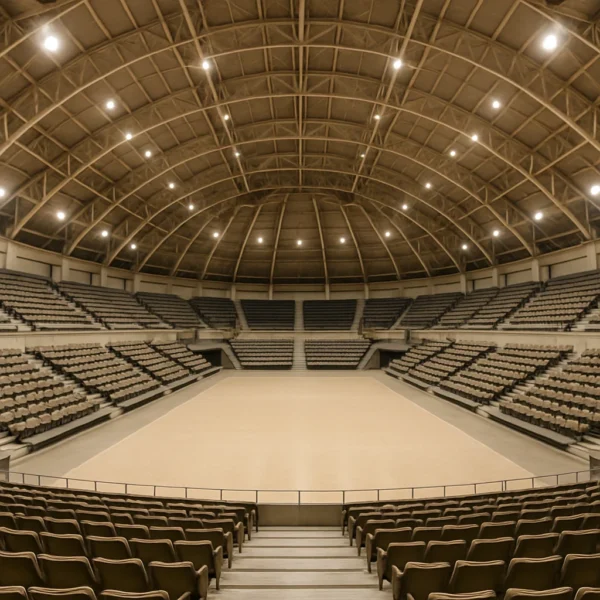
Stage and Event Configuration
One of the Astrodome’s standout features is its modular stage system. With retractable bleachers and a large central floor area, the venue can transition between configurations — from a basketball court to a boxing ring, or a concert stage — within hours.
This flexible layout has been praised by event organizers for its simplicity and cost-effectiveness. Unlike modern venues that require complex reconfiguration teams and moving partitions, the Astrodome’s open design and central access points allow swift turnarounds.
Backstage and Operational Areas
Behind the scenes, the Astrodome contains multiple green rooms, dressing areas, media booths, and storage rooms. While modest in comparison to newer arenas, these spaces have been upgraded over time to accommodate television crews, live event technicians, and large stage equipment.
In the early 2000s, additional exits were installed to meet updated fire safety codes. The arena now includes at least 10 emergency exits and security-controlled entry points, increasing crowd safety and minimizing congestion.
Accessibility and Parking
One of the venue’s enduring strengths is its accessibility. Situated along Roxas Boulevard, it is easily reachable by jeepney, bus, and even LRT-1 via the Libertad Station. This connectivity remains a core reason for the venue’s sustained usage by public agencies and civic organizations.
The facility includes two on-site parking lots, with capacity for around 150 vehicles. While modest by modern standards, overflow parking arrangements with nearby malls and barangay centers often help mitigate this limitation.
Ventilation and Air Conditioning Evolution
Initially designed with cross-ventilation in mind, the Astrodome used industrial exhaust fans and passive vents during its early years. However, due to rising temperatures and audience expectations, Pasay City funded the installation of centralized air conditioning in 2013. While not state-of-the-art, the system was a major comfort upgrade, particularly for summer events.
Since then, minor energy efficiency improvements — including LED lighting and better insulation — have been implemented as part of the city’s green initiatives, aligning with broader efforts to modernize public infrastructure.
Venue Timeline of Key Structural Changes
| Year | Structural Update |
|---|---|
| 1993 | Construction completed; arena opens to the public |
| 1998 | Repainting and sound system enhancements |
| 2013 | Central air conditioning and new seats installed |
| 2017 | Emergency exits expanded; LED lighting added |
| 2023 | 30th Anniversary mural + commemorative design panel |
This venue timeline illustrates how the Cuneta Astrodome, despite budgetary and logistical limitations, has evolved steadily to meet community needs — a testament to its resilience and continuing relevance in Philippine arena history.
Cuneta Astrodome in Philippine Culture and Identity
More than just a building, the Cuneta Astrodome has become a symbol — a canvas upon which countless stories of Filipino life have been painted. From childhood memories of family basketball nights to historic political moments that shaped a nation, the Astrodome stands at the intersection of culture, sport, faith, and public life. In this section, we explore how the arena has influenced and reflected Philippine identity over the past three decades.
A Home for Basketball Legends
Ask any Filipino basketball fan aged 30 and above, and chances are they’ve seen a live game at the Cuneta Astrodome. It was here that PBA icons like Benjie Paras, Jojo Lastimosa, and Kenneth Duremdes dazzled crowds in packed stadiums. These were not just games — they were national events broadcast on prime-time television, complete with drum-beating fans and halftime dance shows.
Unlike more exclusive arenas, the Astrodome has always been accessible. Students, jeepney drivers, office workers — everyone could afford a ticket in the General Admission section. For many, it was their first live sports experience. This inclusivity contributed to basketball’s status as the Philippines’ unofficial national sport, and made the Astrodome its beating heart during the 90s and early 2000s.
Venue for Political Turning Points
Over the years, the arena played host to rallies that would eventually shape the course of national leadership. From senatorial campaigns to mayoral proclamations, the Cuneta Astrodome was often where political figures made their most passionate appeals to voters.
It was in this very venue that massive crowds gathered to listen to presidential candidates make last-minute pitches. It also served as a canvassing center during elections and, at times, a venue for political debates. These key events highlighted the Astrodome’s dual role — both a place of entertainment and a center for democratic engagement.
A Space for Faith and Unity
Religion plays a central role in Filipino society, and the Cuneta Astrodome has reflected that reality throughout its existence. Large-scale prayer rallies, worship concerts, and church anniversaries have regularly filled the venue with believers from all walks of life.
From Born Again congregations to Catholic youth gatherings, the arena has hosted a multitude of denominations. It was even the site for interfaith events that promoted religious harmony in times of crisis — including during the COVID-19 pandemic when messages of hope were broadcast from its stage to quarantined communities.
Hub for Filipino Pop Culture
Before the rise of mega-malls and convention centers, the Astrodome was ground zero for pop culture in the South of Metro Manila. Album launch concerts, dance competitions, and even early episodes of reality shows were shot here. Local TV variety programs often selected the arena for live tapings, taking advantage of its size and its energetic Pasay audience.
Filipino celebrities such as Sharon Cuneta, Regine Velasquez, and Ogie Alcasid have all performed here, often during pivotal moments in their careers. Many recall the emotional Sharon Cuneta comeback concert held at the Astrodome in the mid-2000s — a heartfelt homecoming that echoed throughout Filipino households.
Ask residents of Pasay or southern Manila what the Cuneta Astrodome means to them, and you’ll get deeply personal answers. Some remember it as the place where they first fell in love during a high school sports meet. Others recall seeing their favorite band perform live, or celebrating graduation on its hardwood court.
These stories — personal, communal, emotional — are the real legacy of the Astrodome. It may not be perfect. It may not have luxury boxes or state-of-the-art LEDs. But what it has is something far more powerful: memory.
“Sa Cuneta kami nanood ng first PBA game ko. ‘Yun ‘yung bonding namin ni Papa tuwing Sabado.” – Jason, 38, Makati
Educational and Civic Contributions
Beyond entertainment, the Astrodome has regularly partnered with educational institutions and government programs. From hosting quiz bees and youth congresses to job fairs and voter education drives, it has served the city as a multi-use civic facility.
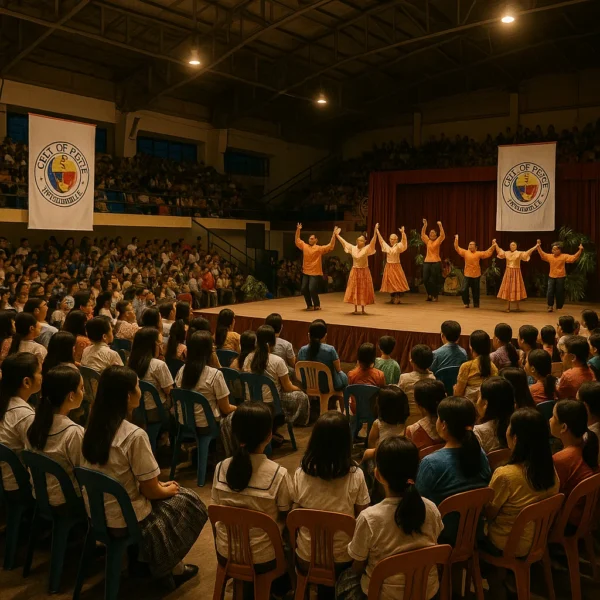
In recent years, Pasay’s Department of Education has organized annual culminating programs here, allowing thousands of public school students to experience performing on a “big stage.” These experiences stay with young Filipinos for a lifetime — shaping their confidence, identity, and sense of place in society.
A Symbol of Resilience
Surviving political changes, economic downturns, typhoons, and a global pandemic, the Cuneta Astrodome has proven its ability to adapt. Whether as a sports coliseum, disaster relief hub, or concert hall, its flexible space and trusted infrastructure make it a reliable partner for both the government and private sectors.
Its evolution mirrors that of the Filipino people — resourceful, enduring, and deeply rooted in community. Even as newer arenas emerge, the Astrodome’s place in the venue timeline of Philippine culture remains secure. It is not only a building but a living witness to joy, struggle, faith, and triumph.
Frequently Asked Questions (FAQ)
Here are some uncommon but insightful questions about the cuneta astrodome history and usage — answered clearly for readers and voice search.
When was the Cuneta Astrodome officially opened to the public?
The Cuneta Astrodome was officially opened in June 1993. The first event hosted was a local basketball match, followed by early PBA games later that year.
Has the Cuneta Astrodome ever hosted international events?
Yes, though most events are local, the Astrodome has hosted regional ASEAN sports events, international religious conferences, and cultural exchange shows in partnership with city governments and NGOs.
What makes Cuneta Astrodome different from modern venues like MOA Arena?
Unlike MOA Arena, which targets luxury and global-scale events, the Cuneta Astrodome is known for community accessibility, cultural relevance, and its history as a “people’s arena” with affordable entry and civic use.
Is the Cuneta Astrodome still in use today?
Absolutely. As of 2025, it continues to host local sports leagues, religious gatherings, job fairs, political rallies, and city-wide civic events — maintaining strong ties with the Pasay community.
Can tourists or students visit the Cuneta Astrodome?
Yes. While not a tourist attraction in the traditional sense, visitors can attend public events or request venue tours through the Pasay City Government, especially during anniversary months or cultural festivals.
Conclusion.
In a rapidly modernizing country, few public venues have remained as relevant and resilient as the Cuneta Astrodome. Its long timeline of use — from the early 1990s to today — charts the story of a growing urban center, a passionate sporting nation, and a people who never forget where they came from.
From housing thousands of roaring basketball fans to sheltering evacuees during typhoons, the Astrodome has evolved from a sports complex into a civic landmark. It may not always grab headlines, but it continues to be there when the city needs it most.
As we reflect on the arena history and venue timeline, it’s clear that this dome has witnessed more than just games or concerts — it has seen a nation move, grow, and hope together under one roof. In that sense, the Cuneta Astrodome is more than concrete and steel. It’s a home of memory, community, and continuity in the heart of Pasay.
So whether you’re a longtime basketball fan, a student of local history, or a curious traveler passing through Metro Manila, the Cuneta Astrodome invites you to step inside and become part of its ever-evolving story.

